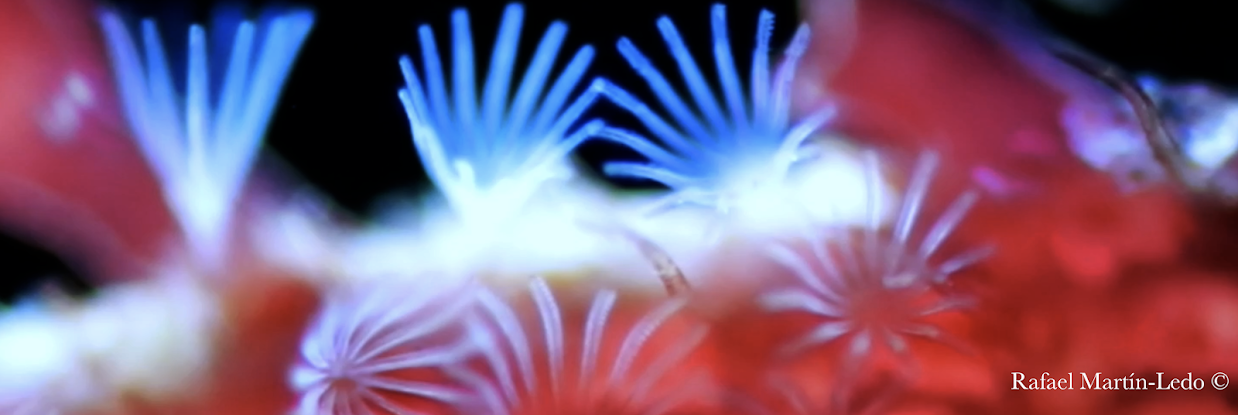Ophiuroidea – Entoprocta
- Ophiuroidea: Ophioplinthus gelida: host
- Entoprocta: Loxosomella sp : commensal
Loxosomella sp. as commensal of Ophioplinthus gelida (Koehler 1900), from which it obtains a substrate that provides its mobility to the food sources, the advantage of not being buried by the sediment as well as certain protection from predators Emschermann (1993). For Ophioplinthus it seems to be no benefits at all.
Loxosomella is mainly located at the edges of dorsal interradii as well as on the lateral plates along the arms, being able to appear with a high density of individuals. They can also appear on the ventral part of the disk, but in a scarce proportion.
Entoprocta (Kamptozoa): colonial or solitary suspensivore lophophorates whith the anus inside of the tentacle crown (lophophore), unlike the bryozoans (Ectoprocta) Loxosomella are solitary entoprocts.
1. Extended lophophorate 2. Bud 3. Contracted lophophorate
Materials studied from Expedition ANTARKTIS- XXlll / 8 Polarstern 2006/2007 in Joinville Island (3 brittle stars with Loxosomella). They correspond to the same geographical area that the specimens studied by Emschermann to Loxosomella antarctica (Weddell Sea and Bransfield strait).
Specimen conserved in 70% ethanol, all photographs were made in ethanol.
Collected by Pablo J. González-López.
Identified by Rafael Martín-Ledo.
The study was made using Motic SMZ-168 TL stereo microscope.
The study was made using Motic SMZ-168 TL stereo microscope.
References
Emschermann (1993) On antarctic Entoprocta: Nematocyst-like organs in a loxosomatid, adaptive developmental strategies, host specificity, and bipolar occurrence of species. Biol. Bull 184: 153-185
July 2010
July 2010




No hay comentarios:
Publicar un comentario
Tus preguntas y comentarios son bien recibidos. Your questions and comments are welcome